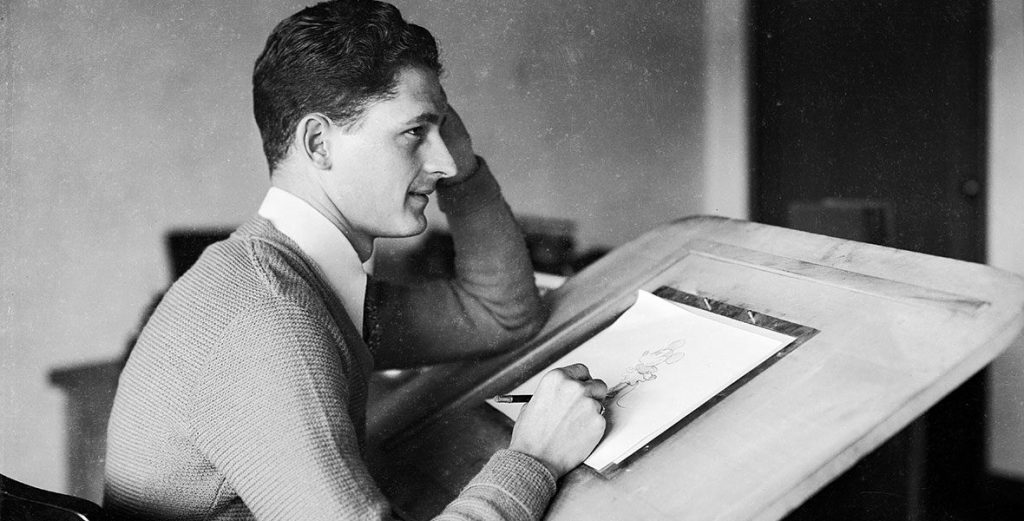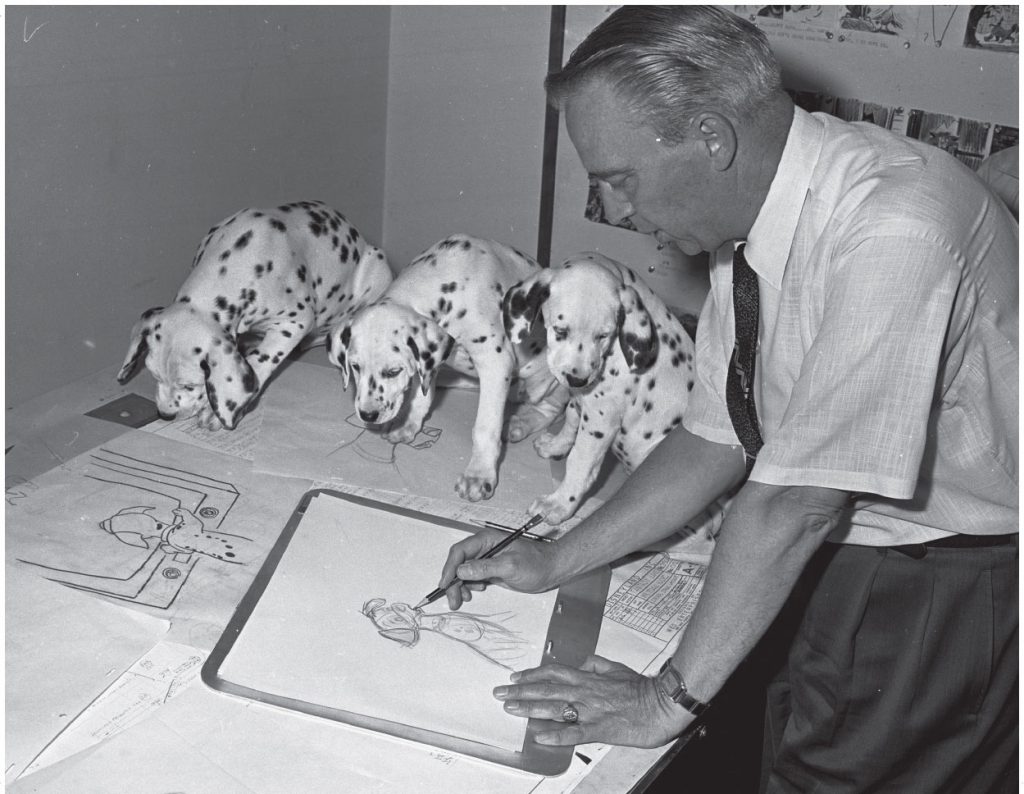The Disney Nine Old Men were a group of Disney animators who contributed to the studio's golden age of animation. They are often referred to as "The Disney Nine" or simply "The Nine," because they all worked together in their early years at the studio and were responsible for creating some of its most popular characters and films.
These men helped define how we look at animation today by mixing traditional techniques with modern innovation (and maybe even psychoanalysis). Let's take a deeper look into what makes these men so important in the history of film!
Attention animators! Follow our blog for insider tips, tricks, and free resources to level up your animation career. Check out our free masterclass, Animation Business Accelerator Program, and download our free marketing handbook. Studio owners can learn how to start their own animation studio with our informative blog on "How to Start an Animation Studio." Don't miss out on this opportunity to take your animation career to new heights!
Image by WDW Magazine
The First of the Disney Nine Old Men: Les Clark

Image by D23
Les Clark was the first of the Disney nine old men to be hired by Disney Studios in 1927 and started off with menial tasks such as scanning other animators' drawings and operating cameras!
As time went on, other animators discovered that Les had incredible animating hidden talents such as how he portrayed his characters’ touching emotions in subtle ways. Les also had a flawless ability to time animated movement to music which can be seen in the dancing scene for “A Silly Song” in Snow White and the Seven Dwarfs.
Eric Larson

Image by O’Reilly
Eric Larson was born in Chicago, Illinois in 1914. He began his career as an animator at Disney Studios six years after Les Clark and started off as an inbetweener and later became an animator when he showcased his animating talents in Pinocchio (even though he was originally a journalist by trade!)
As the years went on, Eric realized the urgent need to assemble youthful talent in the 1970s, as the Disney nine old men started to leave the company. He broadened the studio's program in order to find and develop up-and-coming artists who would carry on the studio's legacy.
Eric flourished when given creative freedom and supported the success of other animators. He was a talented teacher, a rarity among the studio's seasoned pros, and he freely shared his knowledge with young followers like Andreas Deja.
Wolfgang Reitherman
Image by O’Reilly
Wolfgang Reitherman also joined Disney in 1933, the same year as Eric Larson. Walt was taken by Wolfgang's artwork and hired him as an animator for short films like The Band Concert and Silly Little Bunnies. Wolfgang's talents were in his animation abilities with big, exciting, and thrilling moments instead of soft or comic ones, which was a contrast to many of his peers in the studio.
He designed many scenes but the top scenes where his exciting work is shown are the struggle between Prince Phillip and Maleficent, the Headless Horseman's scary pursuit, Monstro's massive assault, and as far back the dinosaur combat in Fantasia's "The Rite of Spring".
When Walt passed in 1966, it was a difficult time for everyone working at Disney Studios. Amongst the grieving loss of Walt and being one of the Disney nine old men, Wolfgang took charge and stepped up to start running the studio's productions. He was a great production leader and oversaw the direction of The Aristocats, Robin Hood, and The Rescuers.
Milt Kahl

Image by Wikipedia
Milt Kahl was hired in 1934 and started off as one of many assistant animators during the production time of Snow White and the Seven Dwarves.
Milt understood the necessity of boring, repetitive animation duties just as much as the glamorous ones, in contrast to other animators who aspired for creative individuality. He was therefore prepared to sketch the more generic, uninteresting characters that nobody else wanted to depict.
He spent a lot of time creating these characters, so he picked up some quirks like the recognizable "head swaggle" and mastered features like realistic hands.
Ward Kimball
Image by D23
Disney nine old men, Ward Kimball, was a skilled artist who was also employed in 1934 as an inbetweener but quickly advanced to assistant animator. He preferred to draw exaggerated, comical characters to realistic ones. The young man was hired by Walt when he first noticed his potential, and he worked as a supervising animator for three decades!
Many well-known characters, like Pecos Bill and Jiminy Cricket, were created by Ward. Although many people think The Three Caballeros is his best work, he also enjoyed painting all the magnificent figures in Alice in Wonderland.
While he did work on a few features, Ward preferred to direct theatrically released shorts like "It's Tough to Be a Bird," which was recognized with the 1970 Oscar Award for Best Animated Short Film.
Frank Thomas

Image by IMDb
In 1934, Frank Thomas was also hired, he was animator employee number 224! In addition to his contributions to the studio's feature-length pictures, he worked extensively uncredited on the numerous short films that were produced between 1935 and 1943.
His dependability and talent eventually led to his being hired as a directing animator, where he oversaw the creation of numerous iconic characters. Some of them, like Captain Hook and The Queen of Hearts, he even invented himself. The passionate spaghetti dinner scene from Lady and the Tramp is his most well-known sequence.
Frank wrote a book called Disney Animation: The Illusion of Life, which was co-written with his best friend and fellow Disney nine old men animator, Ollie Johnston in 1981. It is recognized as one of the best books on animation ever written. If you want to learn about Disney's 12 fundamental principles for animation, this book is a must-read! Many animators still adhere to the 12 principles of animation today.
Ollie Johnston
Image by WordPress
Talking about Frank Thomas would be incomplete without mentioning his best friend Ollie Johnston, who began working at Walt Disney Studios about the same time. Together, the two produced dozens of feature pictures, including Pinocchio and The Fox and the Hound. His works like Mr. Smee and Cinderella's stepsisters are also very well-known!
Ollie Johnston was a key member of Walt Disney’s animation team for over forty years and one thing interesting thing about Ollie was that he loved trains. He had such a fire-burning passion for them that he created a scale model of the La Caada Valley in his backyard. It is what motivated Walt to construct his own railroad, which ultimately resulted in the development of Disneyland.
After their retirement, he and Frank worked together on the National Student Film Institute's board of directors. Ollie was the last of the Old Men to die away; he was 95 years old. Ollie received the National Medal of Arts from President George W. Bush a few years before he passed away.
Marc Davis
Image by Duchess of Disneyland
Davis was born in 1910 in Canada but relocated with his family to California when he was barely five years old. He studied art at Chouinard Art Institute (now CalArts) in Los Angeles before joining Disney Studios in 1930.
Marc joined Disney during the making of Snow White and instantly showed his ingenuity and exceptional talent, helping to set him apart from his peers.
His feminine character drawing skills were widely respected; he had animated Tinker Bell, Cruella De Vil, and Maleficent, as well as traditional princesses like Cinderella and Aurora. This earned him the nickname "ladies' man" from his friends.
Marc transitioned from the company's animation division to Walt Disney Imagineering later in his career, while Walt labored to launch Disneyland. There, he created the ideas for over a dozen attractions, including Pirates of the Caribbean and the Haunted Mansion.
John Lounsbery
Image by D23
The least well-known Disney nine old men on this list is, undoubtedly, John Lounsbery. Because of his quiet, timid personality, he didn't attain the fame later in life that other "old men" like Milt or Ollie did.
Yet, John's draftsmanship was esteemed by his contemporaries. He had the uncanny ability to take a sketch from any of the other animators in the studio and turn it into animation in almost exact imitation of their technique. He was a master at drawing cartoons with expressive faces and flexible, flowing movements.
John joined in 1935 as Norman Ferguson's assistant animator, and the two of them worked closely to animate the short films that included Pluto. Unfortunately, John passed away while co-directing The Rescuers, which was in production.
The Disney Nine Old Men Are Legends of Animation

Read our blog on 6 Secrets Animators Can Learn From Disney Animators
The Disney nine old men were the most influential animators in history. They were responsible for many of the iconic scenes in Disney films, such as Bambi's mother being shot and killed by hunters, or Pinocchio's nose growing when he lies. The Nine Old Men taught a generation of animators how to make animation look real, which led to an explosion of animated films throughout Hollywood during this time period, also known as the golden age of animation.
They changed the way we think about animation, helped create some of the best-known characters, and were instrumental in bringing Walt Disney's dreams to life on screen.
For more information about The Disney nine old men, as well as answers to any other questions you might have about working as a freelance animator, be sure to follow our blogs, check out our free masterclass, and our Animation Business Accelerator Program, download a copy of our free marketing handbook, and check out our blog on “How to Start an Animation Studio”!



